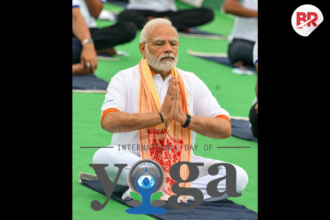
The Hidden Crisis: Vitamin D Deficiency in India
Vitamin D deficiency in India is surprisingly common. Even in a land blessed with sunlight, many Indians don’t get enough of this vital nutrient. From city workers to school children, millions are unknowingly living with low Vitamin D levels.
But how is this possible in a sunny country like India?

Let’s take a closer look.
Poor Diet, Poor D Levels
One big reason for Vitamin D deficiency in India is poor dietary intake. Unlike Western diets, traditional Indian meals rarely include foods naturally rich in Vitamin D.
Items like fatty fish, eggs, liver, or fortified dairy products are either not a regular part of many diets or are too expensive for daily use.
Even where fortified foods are available, awareness is low. As a result, many people miss out on an easy way to boost their Vitamin D.
Also Read: Forget Boring Cereal: These Guava Breakfast Ideas Will Wake You Up
Sunlight: Not Always Enough
We often hear that the sun is the best source of Vitamin D. That’s true. Our skin makes Vitamin D when exposed to sunlight.
But in modern India, many people barely get 10 minutes of sun a day. Office workers, students, and homemakers spend most of their time indoors.
And when people do go outside, they often cover up to protect themselves from pollution or heat. Cultural clothing like long sleeves, scarves, and dupattas, though important, also reduce skin exposure.
Plus, darker skin, which is common in India, takes longer to produce Vitamin D from the same sunlight compared to lighter skin tones.
So, despite all the sun, many still fall short.
Also Read: Late-Night Sleepers Face Silent Diabetes Threat—Are You at Risk?
City Life Makes It Worse
Life in Indian cities adds more challenges. Tall buildings block sunlight. Pollution creates a thick layer of smog that stops UV rays from reaching the skin.
Busy routines, long commutes, and screen time leave little room for outdoor walks or fresh air.
As India becomes more urban, these lifestyle changes are making Vitamin D deficiency more widespread.
Low Awareness and Health Checks
Another key problem? Lack of awareness. Most people don’t know they’re deficient until symptoms like fatigue, muscle pain, or bone weakness show up.
In rural areas or among low-income groups, health check-ups are rare. Without regular testing, the problem goes unnoticed.
Even those who do find out may not get the right guidance or supplements to fix it.
Also Read: 30 Minutes of Exercise Daily Could Quadruple Brain Cell Growth, MIT Finds
What Can Be Done?
Fixing Vitamin D deficiency in India will take effort on many fronts. Here’s what can help:
- Eat smarter: Add fortified foods like milk, orange juice, and cereals to your diet. Include eggs and fish if possible.
- Sun safely: Aim for 10–30 minutes of sunlight a few times a week on your face, arms, and legs.
- Check regularly: Ask your doctor for a Vitamin D test, especially if you feel tired or weak often.
- Raise awareness: Schools, workplaces, and public health campaigns can spread the message.
- Take supplements: If needed, safe Vitamin D tablets can boost your levels under medical guidance.
Final Thoughts
Vitamin D deficiency in India may seem like a small issue. But left untreated, it can lead to serious health problems. The good news? It’s easy to prevent with small, daily changes.
By eating better, getting a little sun, and knowing the signs, we can shine a light on this hidden problem—and fix it.
Also Read: Skipping Sleep Isn’t the Biggest Risk—Mismatched Meals Are












